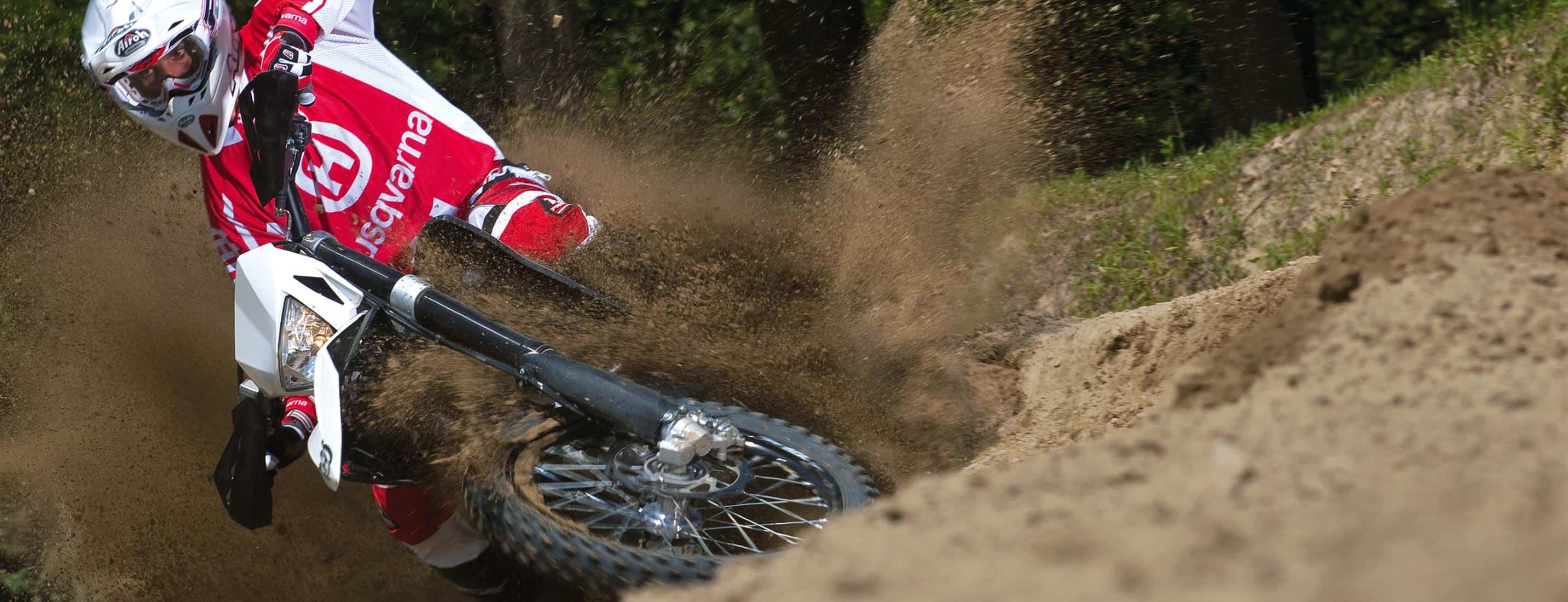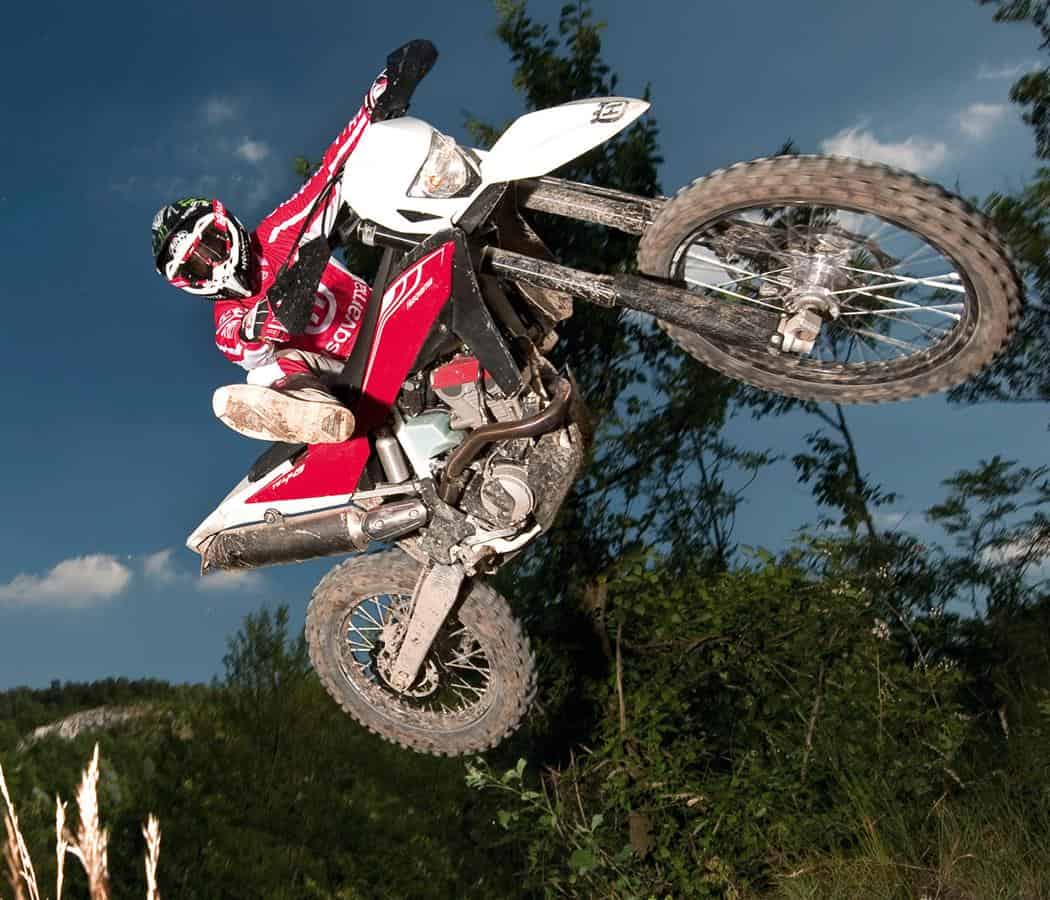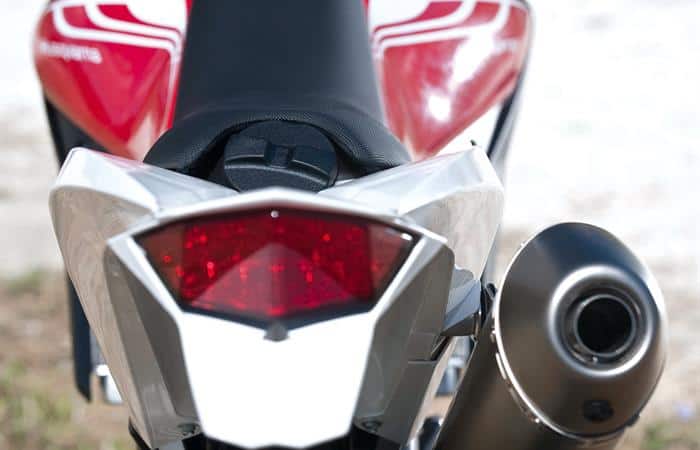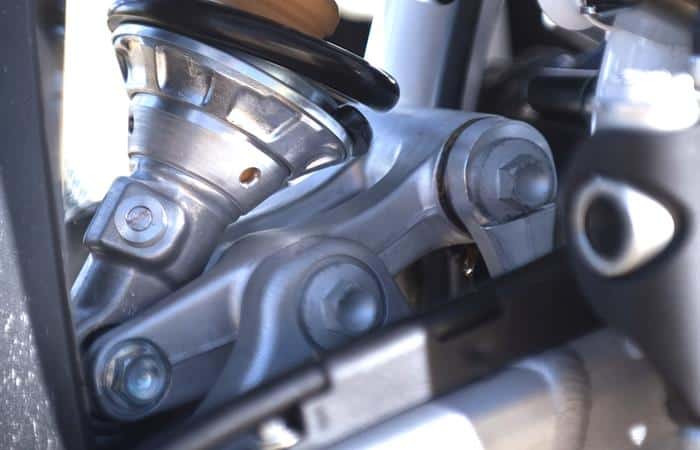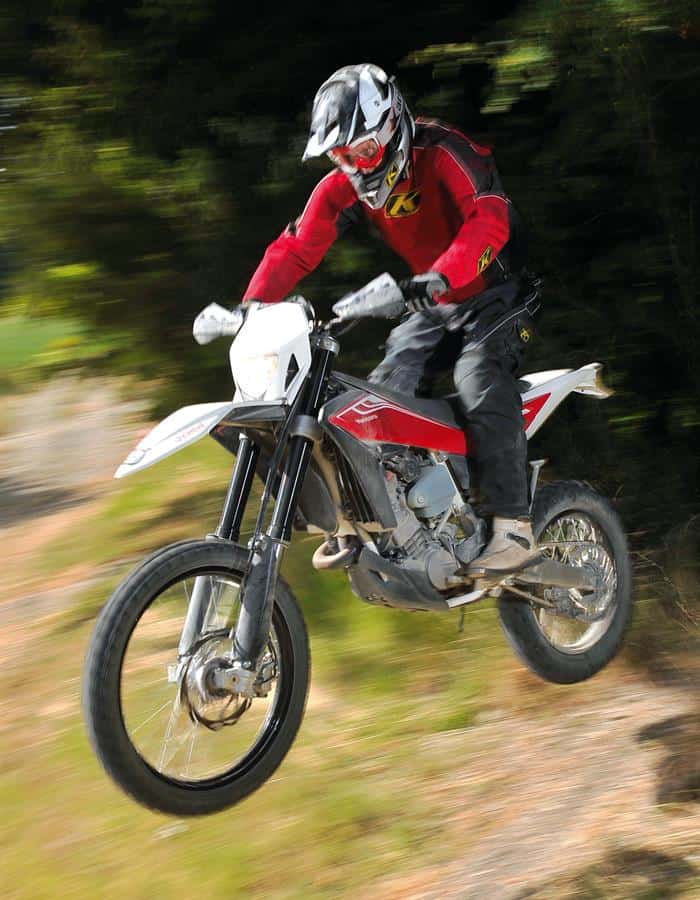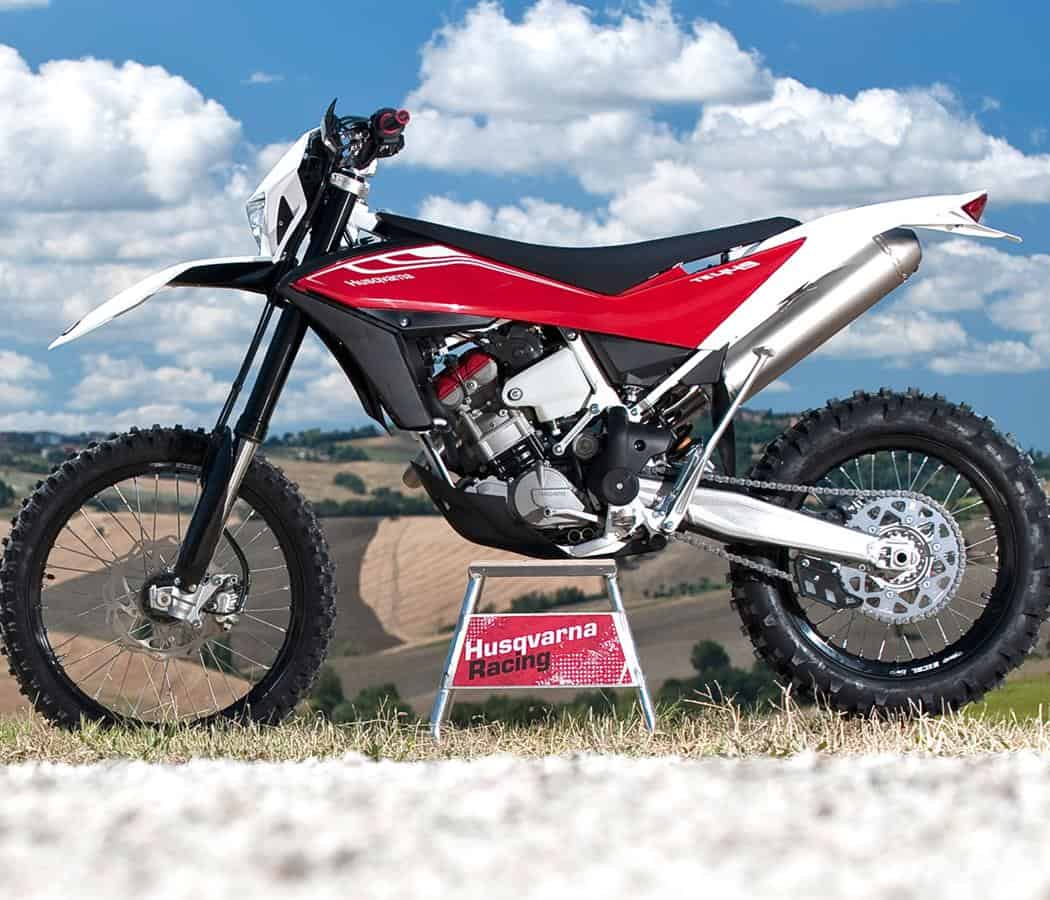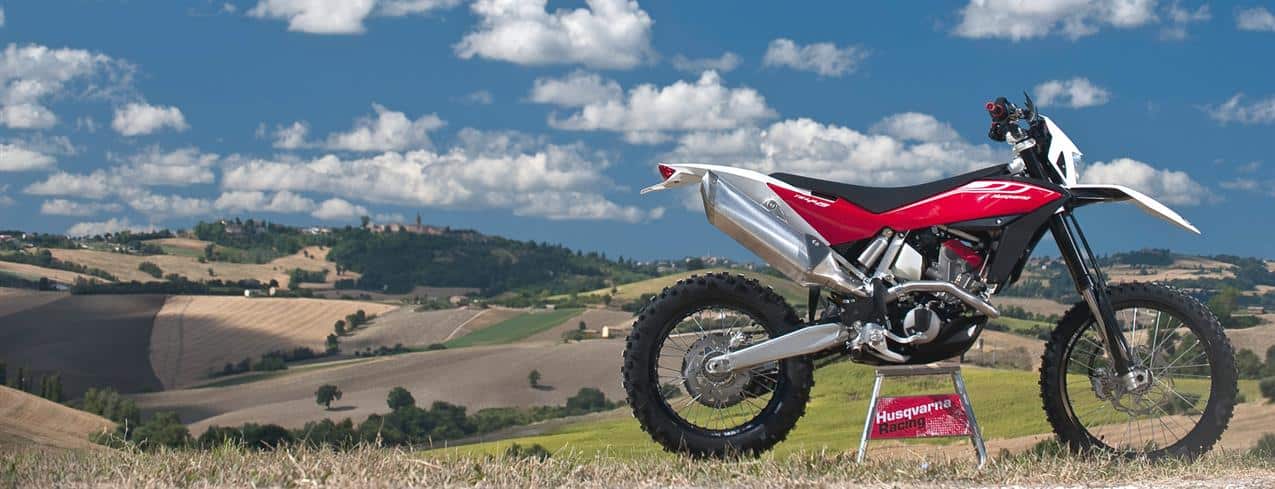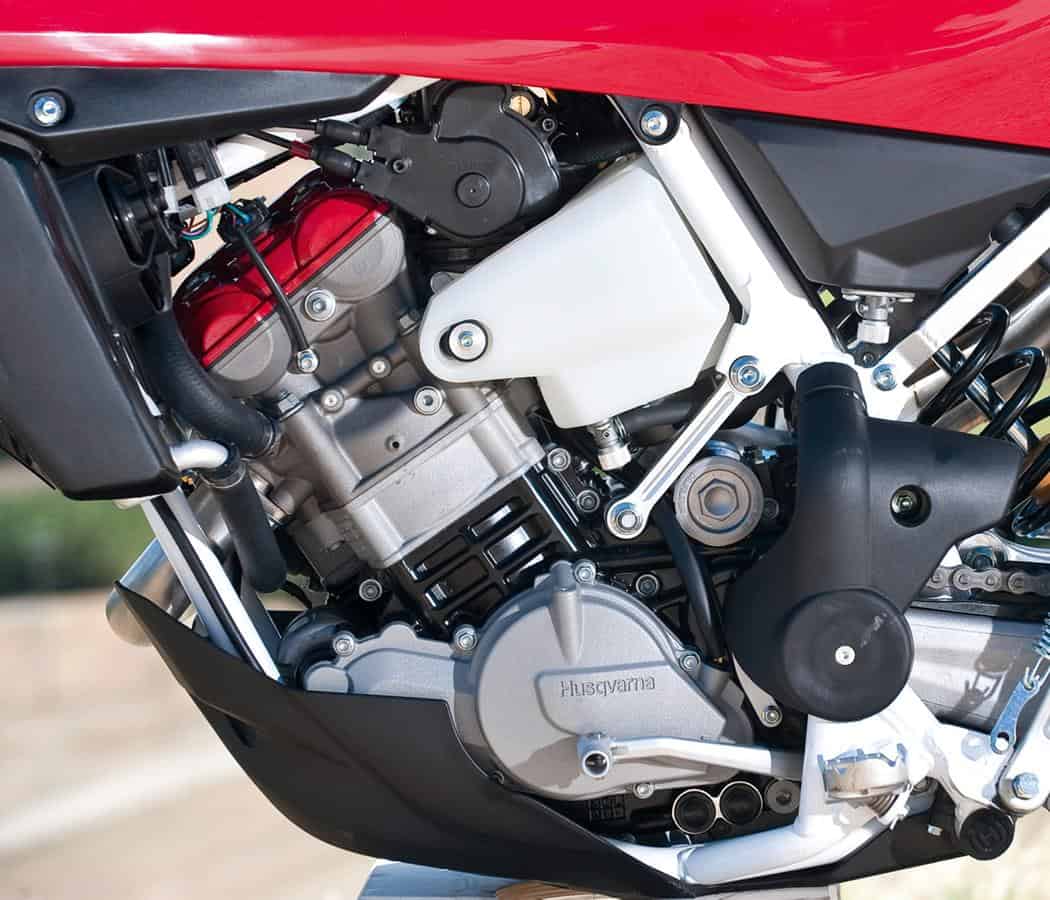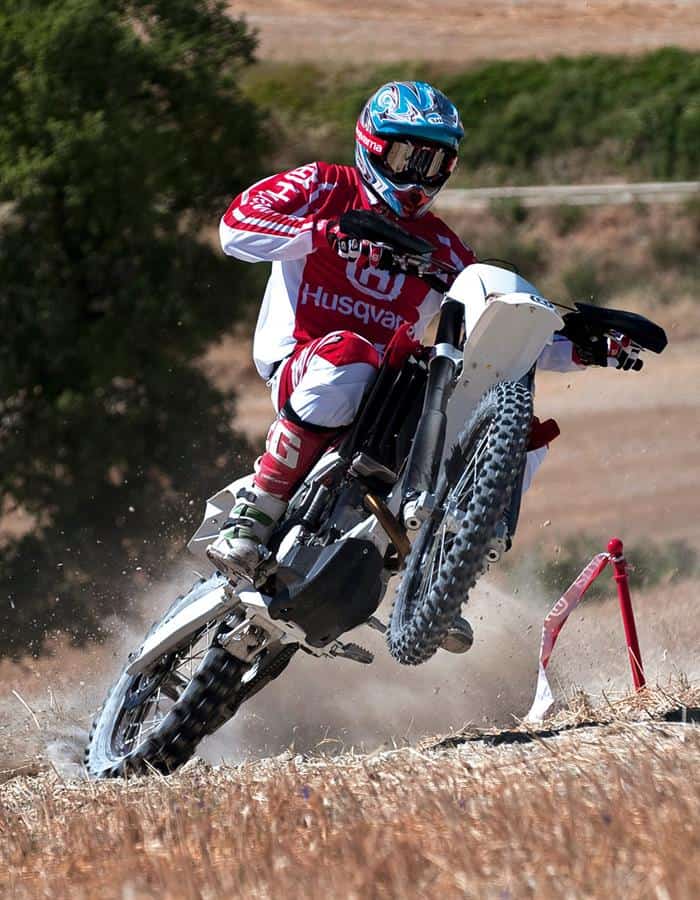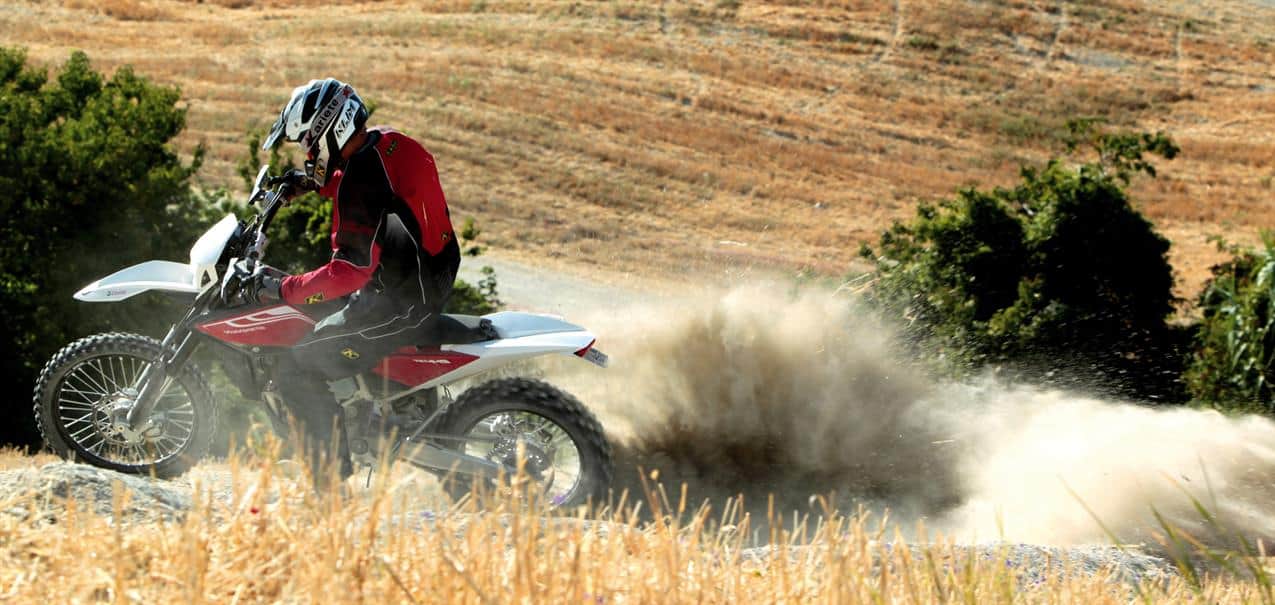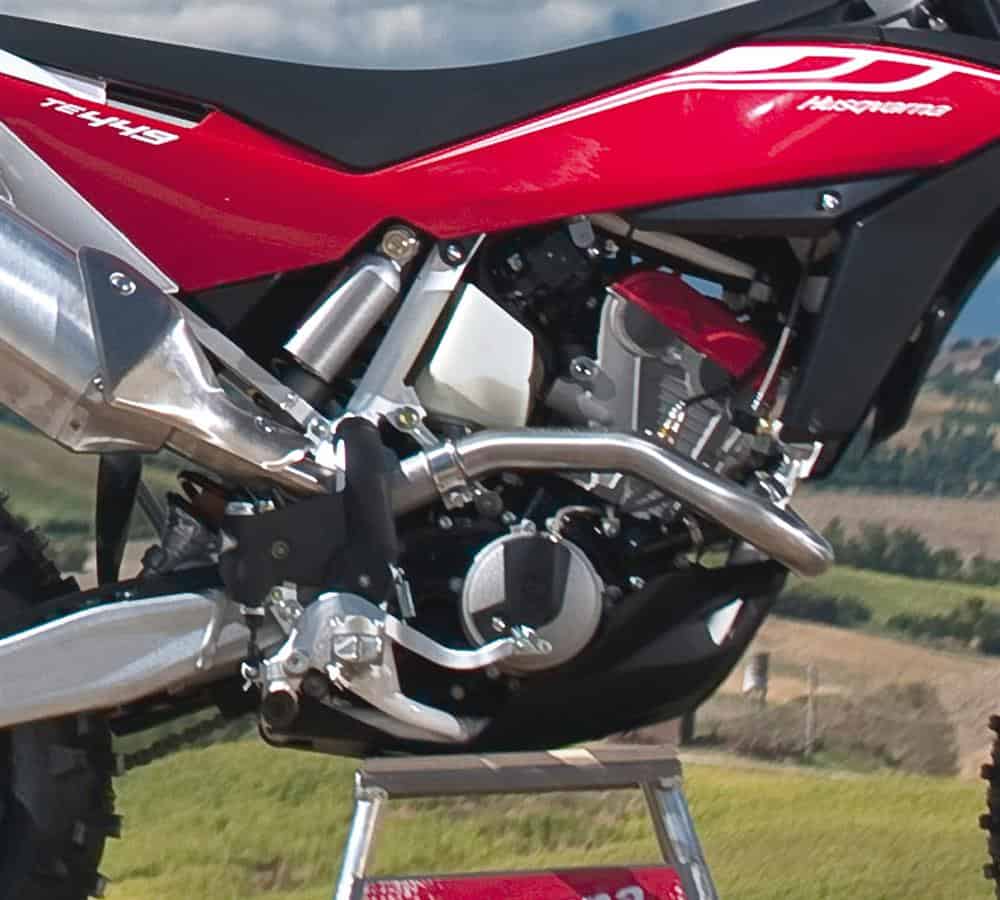Husqvarna’s new TE449 is a mixed marriage of BMW’s G450X engine and an all-new Italian chassis. But is it the racer we’d been hoping for? Barni flew to Italy for a (brief) spin to find out…
Anyone who’s ever bought a vehicle advertised as an ‘unfinished project’ will know all too well what a minefield it can be. The first question you ask yourself is ‘why is it unfinished?’ Did they run out of cash, inspiration or enthusiasm? Did the wife say ‘it’s me or that thing in the garage?’ Or was it because they realised that the project was going nowhere, there was way too much work involved and, after already sinking large chunks of their bank account into it they should probably get out of it while they’ve still got a shirt on their back and a roof over their head..? And I can’t help but think that an unfinished project is what Husqvarna were given to deal with when parent company BMW’s G450X project hit the rocks…
Husqvarna’s original DOHC TE450 has always been a bit of a handful, with the kind of feisty twin-cam power that wears you out quicker than a Thai massage in downtown Bangkok. Whether Husky would have been given the funding for an all-new motor had the G450X proved a roaring success we’ll probably never know, but when the Beemer failed to attract anything other than sales from a few die-hard Germans, and with the spectacular PR disaster that was Knighter quitting the race-team mid-season, I wonder at what point it dawned on the Italians that they would be left to develop into a Husky what BMW had started..?
So in mid-2009 we learned that Husqvarna were building a Beemer-engined bike that would replace the old TE450 for 2011. Well here it is, and in order to distinguish the 2011 machine from the outgoing bike they’ve called it the TE449…
Mixed Blessing
Inheriting the Beemer engine is like your dad giving you his old 1985 Maestro when you first pass your driving test. You find yourself saying ‘Thanks’ when really what you want to say is ‘Aaaaaargggh’. Because aside from being marketably-challenged, the 450X engine came with more baggage than the mother-in-law on a family holiday.
The fuel injected motor runs a slanted cylinder with a very straight inlet tract which requires an airbox where the fuel tank should be. So like the BMW the new Husky employs a rear tank system, with the gas cap located at an angle at the rear of the seat. Much of the 8.5L of fuel is held under the seat, with two litres (and the fuel pump) residing in a ‘transfer’ tank mounted around the rear of the cylinder.
Then there’s the backwards spinning motor, the crank-mounted clutch, and – perhaps most contentiously of all – the BMW’s coaxial swingarm pivot/front sprocket. And despite the fact that last year BMW eventually relented and gave their factory riders bikes which featured a conventionally mounted swingarm, Husky have used the original design – calling it CTS, or Coaxial Traction System – where the chain remains tensioned at all times, which they claim, gives a greater level of traction.
Unlike the BMW, the Husky employs a more conventional cradle frame and also runs a linkage rear-end. It’s not the usual ‘underslung’ linkage though, instead it sits above the swinger with a pivot point in the middle. Husqvarna claim this is to aid ground clearance and increase bearing longevity, but the more cynical among you might suggest that it’s been designed to try and counteract some of the more quirky traits of the 450X engine, such as the way that the front-end rises when you roll off the gas, thanks to the counter-revolving crankshaft.
That explains the some of the layout of the new bike but not the ‘funky’ looks… The current TE range contains what are arguably some of the prettiest dirtbikes we’ve ever seen with sweeping lines; kinks and curves in all the right places. The 449 is the exception. Ignore the angular fenders for a second and take in the large combined rad shroud/sidepanel. You might not catch your riding pants or boots on any joins in the panels now, but it makes the bike look big and tall. Compare it to the other models and the 449’s lacking the hole in the side of the rad panel which would otherwise help to break up that large swathe of red plastic. And even though I do kinda like the silhouette of the kicked up tail, the multi-piece fenders seem overly complex. Nope, it doesn’t do it for me…
Sadly, the big bike feel is continued as you swing your leg over the long tall seat and reach out for the relatively low bars. Unlike the other TEs, with lowish seats and high bars where you almost sit ‘in’ the bike and become one with it, the 449 leaves you perched on top. Swapping between it and the other Husky models certainly takes some readjustment.
So fire her up on the button – there’s no back-up kicker on the motor – snick the gear lever into first and feed in the gas. The fuelling is precise without being snatchy and the bike immediately surges forward. Every little tweak of the throttle brings with it an eager drive, yet there isn’t the kind of snap you get with a grunty SOHC lump. Once you’re rolling the turn of speed is deceptive – like that of a big luxury car. It’s smooth, strong and unhurried, wafting you along at quite a rate of knots without being thrashy. Slip home another gear in that smooth-changing six-speed ‘box and you’re soon cracking on.
The similarities between the 449 and a large-motored luxo-barge continue in the fact that it retains that big ‘n’ long feel that you first notice when you climb aboard. Rather than a svelte Euro-enduro weapon there’s definite girth to this bike. It is utterly stable tho’, and in this respect it reminds me a little – and I do mean a little – of Aprilia’s RXV. Just like the V-twin Aprilia, the new Husky certainly isn’t as compact or light as some enduro bikes but the tradeoff for this is that it simply refuses to budge offline when faced with tough terrain. Our all too brief test ride showed that the 449 works well on loose rocks and slabby steps, where you want to simply point it at the summit, or the bottom, and just drive.
Of course, there’s a downside to this stability, and that is that the TE449 isn’t anywhere near as nimble as some of the competition. Again, we didn’t get long enough on the bike to make adjustments or experiment at all, but threading the new TE through the numerous switchbacks of the launch venue’s special test proved hard work. Berms looped around the many corners but it never felt comfortable trying to rail turns. Instead it seemed more natural to steer the bike with the throttle and allow the back-end to step out in the powdery dust.
The flat seat may give you the opportunity to get right up on the headstock, though the way in which the seat curves means that the lowest point is slightly further back than on a conventional dirtbike. And when you hang off the back on descents or over whoops you end up dropping into the dip in the rear fender by the gas cap rather than gliding smoothly back over the back-end.
As a clubman standard rider I found the suspension plush, without being too soft, and of course the Kayaba units are all fully adjustable. And the CTS? Well, the TE449 doesn’t seem to break traction as readily as certain other twin cam 450cc enduro bikes, but is it necessarily better than a regular design, especially given the more involved procedure when swapping-out the front sprocket..? I’m not convinced.
Mixed Bag
A ten kilometre trail/road ride took us from the special test back to base, and the wide undulating tracks through rolling hills showed that the TE449 is well suited to more open riding, where you can simply hold onto one gear, modulate the throttle, and flow everything together in a series of smooth, lazy powerslides. It rewards a ‘kick back and relax’ style of riding rather than the frantic pace of enduro tests. And to that end it would be a great ride for the UK rallies or for that matter, a decent desert rally bike. It might even be nice for long days on the trail, but I wouldn’t want to enter one into a woods-based enduro, that’s for sure!
Build quality is another area where BMW have heavily influenced Husqvarna, and the finish on the 449 looked good. Certain areas of the design did strike me as slightly odd though. For instance, there’s a hole in the rear fender under the gas cap, presumably so that fuel doesn’t pool in the folds of the rear plastics should you spill some, and to make it easier to unscrew the cap. But if fuel can drain down the hole, then mud can splatter up it! And it’s quite a sizeable hole too, so not only will the filler cap become clarted with mud but so could the back of your shirt, and the seat.
Then there’s the lack of a heatshield on the long header pipe and the fact that the silencer is unprotected for its entire length. As a design feature the kicked-up and stripped-down rear-end is certainly eye-catching, but throw the bike down the trail a couple of times and that pipe is going to look secondhand very VERY quickly. And, because of the front-mounted airbox, the filter change is just as involved as it was on the Beemer, requiring the removal of the seat, the unbolting of the front half of the long sidepanel and the unclipping of the filter carrier before you can remove the foam from its cage.
In the Mix
Along with the 449 Husky are also building a bored-out E3-class 477cc version dubbed the TE511 (there’s also a TXC cross country version for the US market, and an MXer which there’s little point in telling you about, partly because we’re not a motocross mag and partly because the only person you’ll ever see riding one is a sponsored rider!). The 511 wasn’t available on the launch so we can’t tell you how it rides. We can’t tell you why it’s called the 511 either, as Husky have traditionally used the 510 moniker for their open classer, and it’s not as if they’re committed to renaming ALL of the new models. After all, the 310 is still the 310, despite running an entirely different motor, and displacement, to the old bike.
Ah yes, the new 310. I’ll get to that in a minute. But first I should mention that the two-stroke WR125, 250 and 300 weren’t available to ride either, and that only small tweaks such as modified airboxes and ignitions have been made to Husky’s 2011 2T range.
It’s now the second year for the latest generation 250 thumper, and Husky have found a few areas where improvements can be made. The frame has been altered with new forged sections around the footpegs and rear master cylinder, and sleeker rails under the motor. The tank capacity has been increased from seven to 8.5L and the airbox is now better sealed. The bike, along with the 310, also features the facility to swap between two ignition maps via a bar-mounted button and, thankfully, they’ve added some proper protection to the exhaust link pipe so this year the 250 didn’t burn a huge hole in my riding pants (unlike the 449)!
However, the biggest question in my mind was not if I’d be going home with singed trousers, but whether the factory had addressed the slight bottom-end stutter that beset last year’s bike. We know that thanks to the optional competition silencer, exhaust mods were supposed to cure the problem though I couldn’t say for sure that the factory have cured the glitch. Yes, they have changed the pipe so that the baffle no longer rattles but our test bikes did occasionally splutter when you cracked the throttle. However, whether this was down to the same gremlin as last year, or the particularly dusty conditions quickly choking the air filters I’m not going to speculate. I guess we’ll just have to wait until we can get a longer ride on a bike here in Blighty.
I wasn’t quite so impressed with the 250’s mid-range as I was last year, as the bike seemed to need riding harder than before, regardless of which ignition map was selected. Again, this was just a first impression because with limited time available to ride the bikes, the 250 played second fiddle to the two new models.
Mixed Media
With the off-road scene now infatuated with ‘class-busting’ mid-capacity machines (modified 250s and bikes such as KTM’s new 350), the TE310 is arguably more interesting than the new 450, and I can certainly see more British riders aboard them. And rightly so, because it’s a lovely size for a racebike. In boring AND stroking the 250 motor (it now measures 82 x 57.3mm to the 250’s 79 x 50.9mm) the new Husky has lost a little of the bike’s sprightly, super quick-revving feel, but the upside is a welcome increase in bottom-end and mid-range grunt.
Where the 250 would require a downshift or a flick of the clutch the 310 would pull the taller gear, and even though there’s no doubt you still need to really work the motor to get the best from it, being at precisely the right revs isn’t so crucial. Compared to the outgoing 310, well, the new motor did feel more inclined to spin-up and with more in the way of top-end. So combined with its lighter weight and more compact dimensions (the 310 and 250 share the same chassis) it’s a much racier machine.
The brakes are exactly the same as the old bike’s – phenomenal. The Brembos are hugely powerful and inspire the confidence to fly headlong towards corners and grab a handful at the very last second. Unfortunately, the Kayaba front forks do not. Last year (on the 250) we thought they were set up a smidgen too soft, especially for the dry and hard Italian test track, though the action was very good. This year they felt even softer, diving straight through almost the entire stroke at barely a brush of the brake lever. Thankfully our test loop wasn’t plagued with braking bumps or littered with holes. Had it been, I’m sure the forks would’ve felt worse. Some work needed with the clickers perhaps…
Mixed Up
The 310 will doubtless find fans in the UK and, with some time spent on the front suspension (the Sachs rear was fine) it’ll be a great ride. The ergos are good, the chassis light and compact, and the motor very easy to live with. Why worry that current capacity-based race classes would pitch it against 450s? Even if you are racing E2 bikes you may well go quicker on the smaller bike anyway! But as a trailie it is sublime.
None of Husqvarna’s 2011 pricing was available when we went to press, but expect the price to be somewhere in the region of £6500 (in 2011) – about the going rate for a competition bike in today’s financial climate.
So, the TE449……… Will it be any more successful than the old (and unloved) G450X I wonder? Despite the myriad changes to the bike’s suspension and geometry, despite the hugely respected Husky name and the Italian’s prowess in enduro, I have to say I’m not too certain.
In using the engine from the high profile white elephant that was the G450X, the 449 isn’t getting the best start in life and, given the way that it feels long and large (like the BMW before it), I don’t think Husky have done enough to tempt people into considering it.
Unlike BMW, Husqvarna do at least have an established off-road dealer network and a long (and illustrious) history in enduro competition so those who were actually considering a Beemer may be swayed into buying the Husky ‘version’. But the lasting impression from my brief spin was that if Husqvarna had developed their own engine the new TE449 would’ve been a very different bike indeed…
Husqvarna TE449
Price: TBA
Engine: Fuel injected, DOHC, electric start four-stroke
Displacement: 449.6cc
Bore & stroke: 98 x 59.6mm
Transmission: 6-speed
Frame: Cro-moly double cradle
Front susp: 48mm USD Kayaba fork
Rear susp: Kayaba shock
Front brake: Brembo two-piston caliper, 260mm disc
Wheelbase: 1490mm
Ground clearance: 335mm
Seat height: 963mm (claimed)
Fuel capacity: 8.5L
Weight: 119.3kg (claimed)
Contact: www.husqvarna-motorcycles.com

